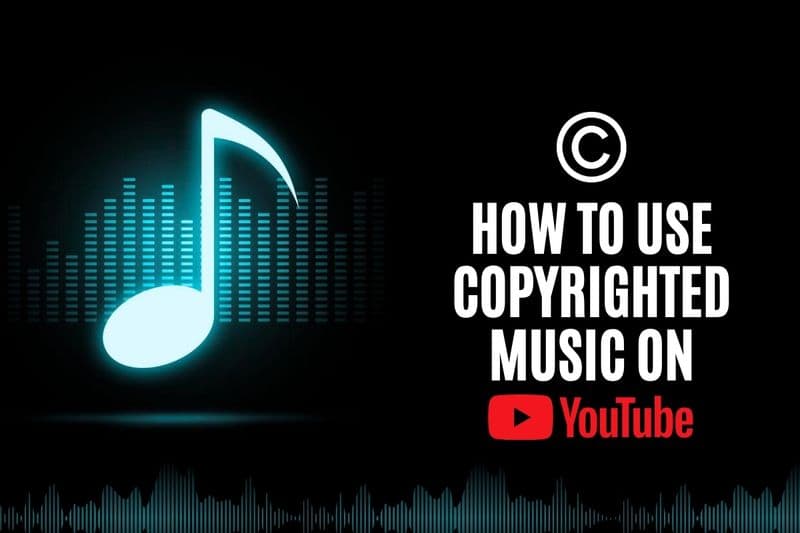How to Use Copyrighted Music on YouTube

Using copyrighted music on YouTube requires understanding copyright laws, fair use guidelines, and YouTube's Content ID system. This comprehensive guide shows US small business owners and content creators the legal ways to use copyrighted music on YouTube without facing copyright strikes or monetization issues.
Understanding YouTube's Copyright System
YouTube's Content ID system automatically scans uploaded videos for copyrighted music. When copyrighted music is detected, several outcomes can occur:
Copyright claim: The copyright owner can monetize your video or mute the audio
Copyright strike: Your video gets removed, and you receive a strike against your channel
Blocked content: Your video becomes unavailable in certain countries
Legal Ways to Use Copyrighted Music on YouTube
1. Obtain Proper Licensing
The most straightforward way to use copyrighted music on YouTube is to secure the appropriate licenses:
Synchronization License: Required to sync music with your video content
Master Recording License: Needed to use the actual recorded version of a song
Performance License: May be required depending on how you use the music
Contact the copyright holder directly or work with a music licensing agency to obtain these licenses.
2. YouTube's Music Policies
Some artists and record labels allow their copyrighted music to be used on YouTube under specific conditions:
Monetization sharing: The copyright owner may claim your video and share ad revenue
Geographical restrictions: Your video may be blocked in certain countries
Muted audio: YouTube may mute the copyrighted portions of your video
Check YouTube's Music Policies page to see which tracks have special usage terms.
3. Fair Use Considerations
Fair use is a legal doctrine that may allow limited use of copyrighted music without permission. However, fair use is complex and depends on:
Purpose of use: Educational, commentary, or parody purposes may qualify
Amount used: Using small portions may be more likely to qualify
Market impact: Whether your use affects the original work's market value
Transformative nature: How much you've changed or added to the original work
Important: Fair use is determined by courts, not YouTube. Claiming fair use doesn't guarantee protection from copyright strikes.
Best Practices for Using Copyrighted Music
Research Before Using
Check YouTube's Audio Library: Search for the track to see if usage policies are listed
Contact copyright holders: Reach out to artists, labels, or publishers for permission
Use music identification tools: Apps like Shazam can help identify copyrighted tracks
Monitor Your Channel
Review copyright claims: Check YouTube Studio regularly for any new claims
Appeal false claims: If you believe a claim is incorrect, use YouTube's dispute process
Track monetization: Monitor how copyright claims affect your video revenue
Consider Alternatives
If obtaining licenses proves difficult or expensive:
Use royalty-free music: Choose tracks specifically created for commercial use
Commission original music: Hire musicians to create custom tracks for your business
Purchase stock music: Buy licensed tracks from platforms like AudioJungle or Epidemic Sound
Common Mistakes to Avoid
Believing These Myths
"I can use 30 seconds of any song": No such rule exists in copyright law
"Giving credit protects me": Attribution doesn't substitute for permission
"It's okay if I'm not monetizing": Copyright applies regardless of monetization
"Live performances are safe": Cover songs still involve copyrighted compositions
Technical Errors
Not checking the entire audio track: Background music in interviews or events may be copyrighted
Using music in intro/outro: These sections are also subject to copyright detection
Assuming remixes are safe: Remixed versions of copyrighted songs are still protected
What to Do If You Receive a Copyright Claim
For Justified Claims
Accept the claim: Allow the copyright owner to monetize your video
Replace the audio: Use YouTube's audio swap feature to change the music
Trim the copyrighted section: Edit out the problematic audio portion
For Disputed Claims
File a dispute: Use YouTube's dispute process if you believe the claim is incorrect
Provide documentation: Submit licenses or fair use justification
Consider legal consultation: For complex cases, consult with an entertainment attorney
Building a Copyright-Safe Music Strategy
For Small Businesses
Develop relationships with local musicians: Partner with artists for original content
Build a music library: Collect licensed tracks you can reuse across multiple videos
Budget for music licensing: Include music costs in your video production budget
For Content Creators
Subscribe to royalty-free platforms: Services like Epidemic Sound or Artlist provide unlimited downloads
Learn basic music production: Create simple background tracks using digital audio workstations
Network with musicians: Collaborate with artists who want exposure for their work
Conclusion
Using copyrighted music on YouTube legally requires either obtaining proper licenses or qualifying for fair use protection. Small business owners and content creators should prioritize building relationships with musicians, investing in royalty-free music libraries, or creating original audio content to avoid copyright complications.
The safest approach is to assume all commercially released music is copyrighted and requires permission for use. When in doubt, consult with legal professionals who specialize in intellectual property and entertainment law.
By understanding YouTube's copyright policies and following best practices for music licensing, you can create engaging video content while respecting artists' rights and protecting your channel from copyright strikes.
Need help creating a comprehensive YouTube content strategy that avoids copyright issues? Onewrk specializes in helping US small businesses navigate YouTube's complex policies while growing their channels. Contact us for a free YouTube audit and learn how our Bangalore-based team delivers professional YouTube management services starting at $499/month.